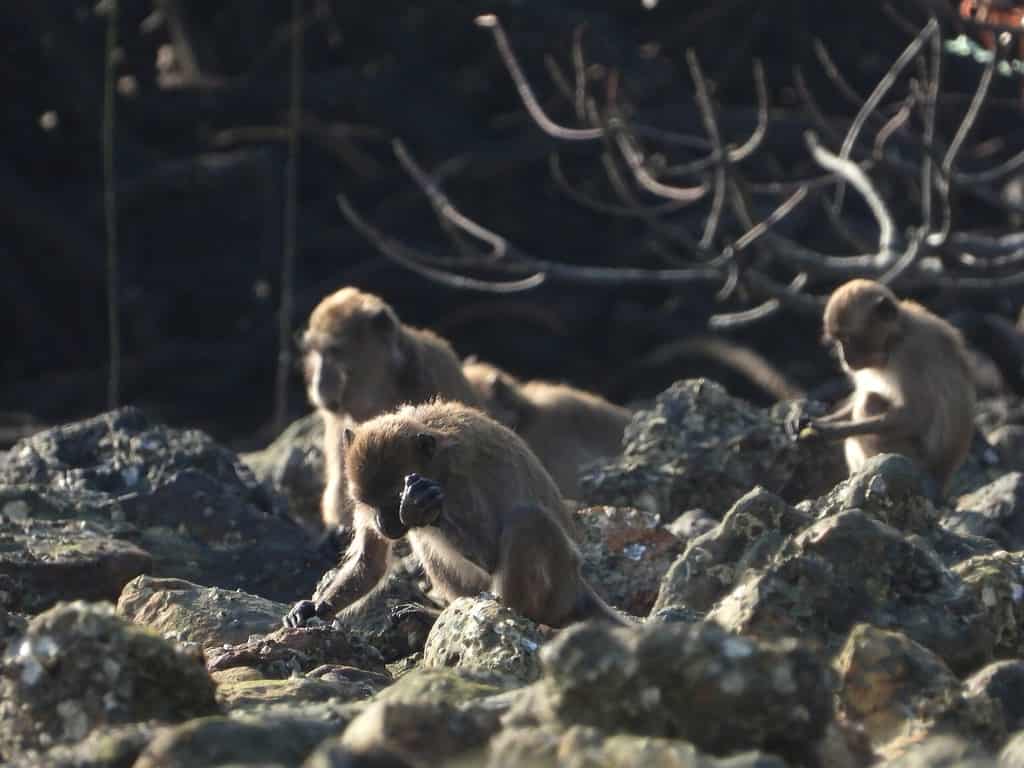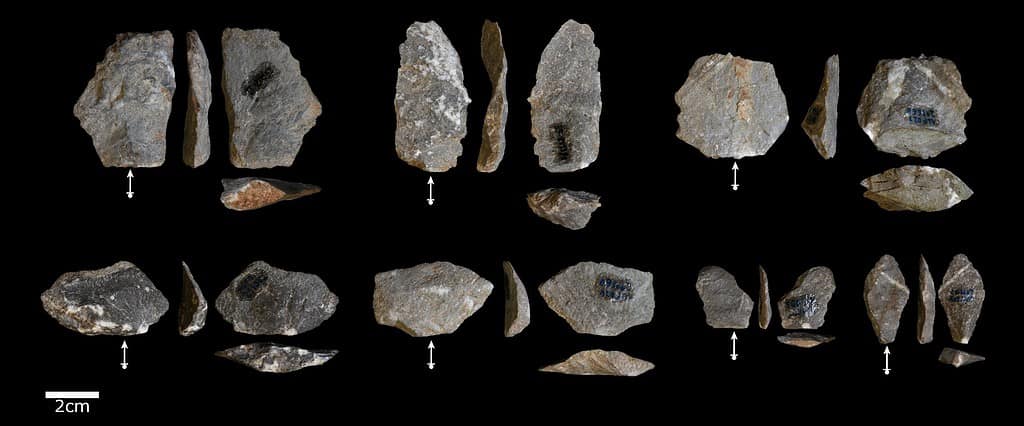When researchers compared the stone fragments produced by macaques in the Phang Nga National Park in Thailand to those produced by Stone Age humans, they were surprisingly similar. Judging by this, you could perhaps suspect that macaques are entering the same level of technological development as the hominin Stone Age. But here’s the thing: the macaques produced the tools accidentally — so what does this say about our ancestors?

Humans aren’t the only animals able to produce tools. From birds to several types of monkeys and apes, and even octopuses, plenty of animals are able to produce various types of tools.
Mankind’s emergence as the dominant species on the planet is tightly linked to our ability to produce Stone Age Tools such as hammerstones or sharp stone flakes that enabled us to manage our surroundings with proficiency.
But macaques make those too.
“The ability to intentionally make sharp stone flakes is seen as a crucial point in the evolution of hominins, and understanding how and when this occurred is a huge question that is typically investigated through the study of past artifacts and fossils. Our study shows that stone tool production is not unique to humans and our ancestors,” says lead author Tomos Proffitt, a researcher at the Max Planck Institute for Evolutionary Anthropology.
Proffitt and colleagues were analyzing common artifacts left behind by the macaques. These monkeys use stone tools to crack open hard-shelled nuts that they like so much. It’s a common behavior that results in an assemblage of broken stones, and the leftovers are common across the landscape.
These artifacts are strikingly similar to the stone tools in some of the earliest archaeological sites in East Africa. But the macaques don’t seem to use them at all — they are just by-products of their cracking technique. In other words, the macaques are producing sharp “tools” that they’re just not using.
“The fact that these macaques use stone tools to process nuts is not surprising, as they also use tools to gain access to various shellfish as well. What is interesting is that, in doing so they accidently produce a substantial archaeological record of their own that is partly indistinguishable from some hominin artifacts.”

Archaeologists have long assumed that the flakes produced by hominins were tools, but what if they’re not? Or what if, at least initially, they weren’t? Co-lead author Jonathan Reeves says the macaque tools could be an important piece of this evolutionary puzzle.
“The fact that these artifacts can be produced through nut cracking has implications for the range of behaviors we associate with sharp-edged flakes in the archaeological record.”
Archaeologists have ways of figuring out whether a sharp tool was actually used for cutting. You can look for traces of bone or other materials that would have been cut with it and other signs of actual cutting use — but you could probably throw a few of the macaque assemblage in with the hominin remains and they wouldn’t stand out at all.
It’s not clear what this means for the hominin-made tools. It could mean that they first made them accidentally and then figured out how to use them, but that’s still a bit speculative. If this is the case, the macaques haven’t figured out how to use them just yet, but they may be on the path to it. But no matter what, this study does cast some questions about the evolution of our ancestors and how they came to use the tools that ultimately set us on a path for world domination.
“Cracking nuts using stone hammers and anvils, similar to what some primates do today, has been suggested by some as a possible precursor to intentional stone tool production. This study, along with previous ones published by our group, opens the door to being able to identify such an archaeological signature in the future,” says Lydia Luncz, senior author of the study and head of the Technological Primates Research Group at the Max Planck Institute for Evolutionary Anthropology. “This discovery shows how living primates can help researchers investigate the origin and evolution of tool use in our own lineage.”
Journal Reference: Tomos Proffitt et al, Wild macaques challenge the origin of intentional tool production, Science Advances (2023). DOI: 10.1126/sciadv.ade8159. www.science.org/doi/10.1126/sciadv.ade8159


